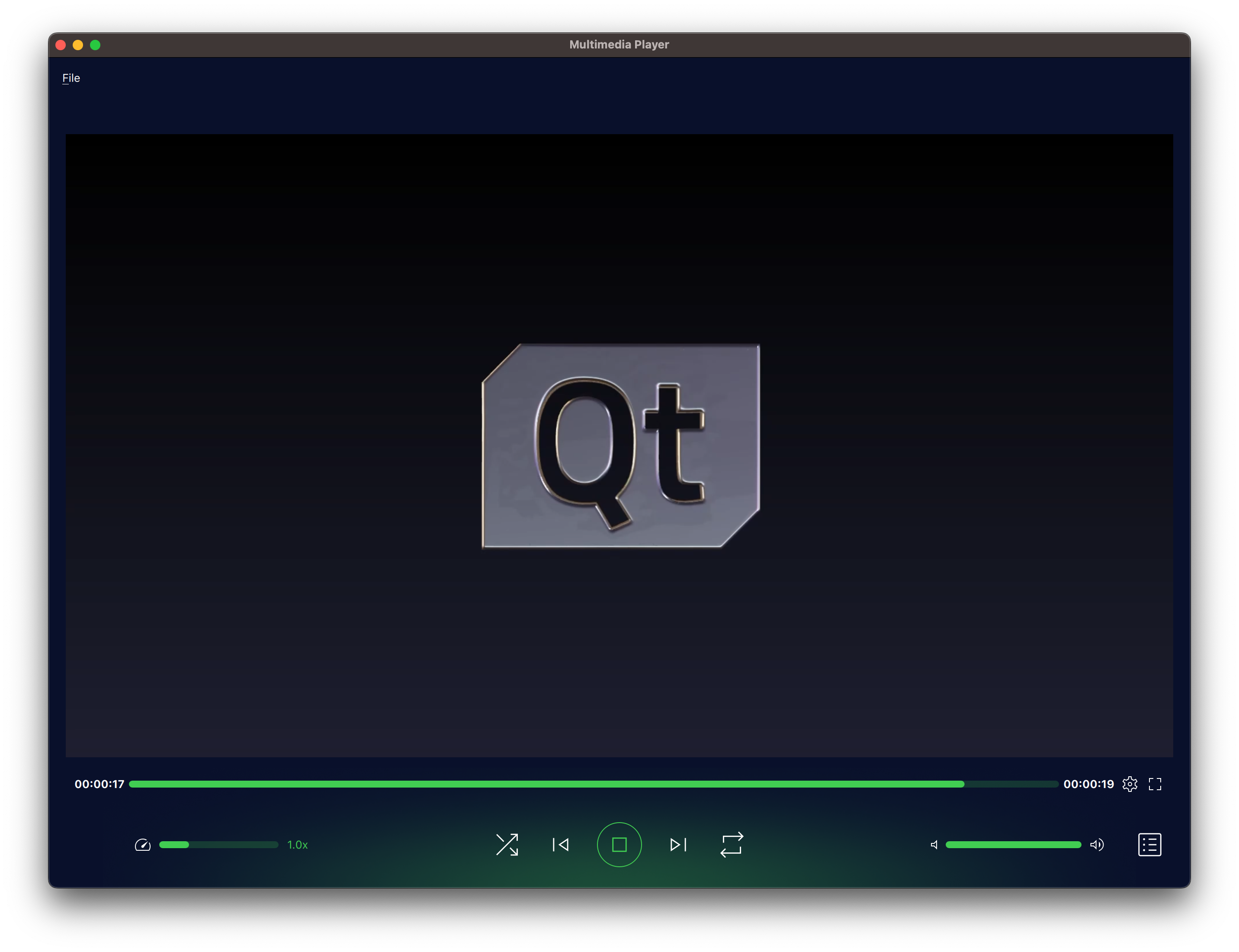SCXML Media Player▲
Media Player demonstrates how to access data from a C++ data model. The data model enables writing C++ code for expr attributes and <script> elements. The data part of the data model is backed by a subclass of QScxmlCppDataModel, for which the Qt SCXML compiler (qscxmlc) generates the dispatch methods.
The UI is created using Qt Quick.
Running the Example▲
To run the example from Qt Creator, open the Welcome mode and select the example from Examples. For more information, visit Building and Running an Example.
Using the C++ Data Model▲
We specify the data model as a value of the datamodel attribute of the <scxml> element in the SCXML file:
<scxml
xmlns="http://www.w3.org/2005/07/scxml"
version="1.0"
name="MediaPlayerStateMachine"
initial="stopped"
datamodel="cplusplus:TheDataModel:thedatamodel.h"The format of the datamodel attribute is: cplusplus:<class-name>:<classdef-header>. Therefore, we need a file called thedatamodel.h that contains a subclass of QScxmlCppDataModel:
#include "qscxmlcppdatamodel.h"
#include <QtQml/qqml.h>
class TheDataModel: public QScxmlCppDataModel
{
Q_OBJECT
Q_SCXML_DATAMODELQScxmlCppDataModel derives from QObject, so we add the Q_OBJECT macro in the private section of the definition, right after the opening bracket. We then place the Q_SCXML_DATAMODEL macro after Q_OBJECT. The macro expands to the declaration of virtual methods, the implementation of which is generated by the Qt SCXML compiler.
In the SCXML file, we specify C++ statements in the <script> element and use the expr attribute to access the data model:
<state id="stopped">
<transition event="tap" cond="isValidMedia()" target="playing"/>
</state>
<state id="playing">
<onentry>
<script>
media = eventData().value(QStringLiteral(&quot;media&quot;)).toString();
</script>
<send event="playbackStarted">
<param name="media" expr="media"/>
</send>
</onentry>
<onexit>
<send event="playbackStopped">
<param name="media" expr="media"/>
</send>
</onexit>
<transition event="tap" cond="!isValidMedia() || media == eventData().value(QStringLiteral(&quot;media&quot;))" target="stopped"/>
<transition event="tap" cond="isValidMedia() &amp;&amp; media != eventData().value(QStringLiteral(&quot;media&quot;))" target="playing"/>
</state>The Qt SCXML compiler generates the various evaluateTo methods and converts the expressions and scripts into lambdas inside those methods in mediaplayer.cpp:
bool TheDataModel::evaluateToBool(QScxmlExecutableContent::EvaluatorId id, bool *ok) {
....
return [this]()->bool{ return isValidMedia(); }();
....
}
QVariant TheDataModel::evaluateToVariant(QScxmlExecutableContent::EvaluatorId id, bool *ok) {
....
return [this]()->QVariant{ return media; }();
....
}
void TheDataModel::evaluateToVoid(QScxmlExecutableContent::EvaluatorId id, bool *ok) {
....
[this]()->void{ media = eventData().value(QStringLiteral("media")).toString(); }();
....
}


